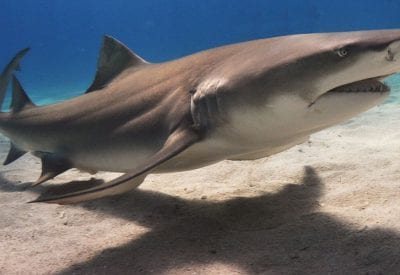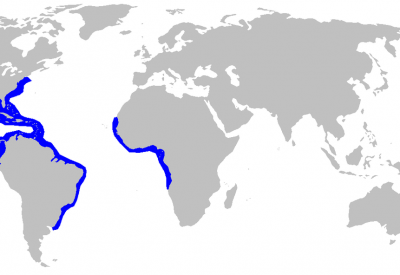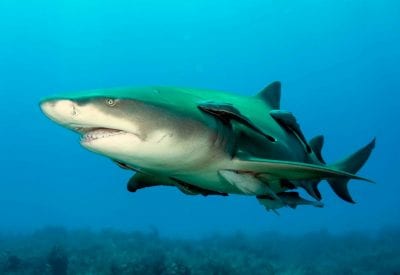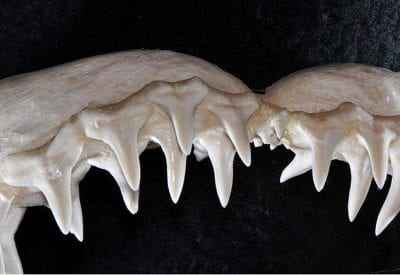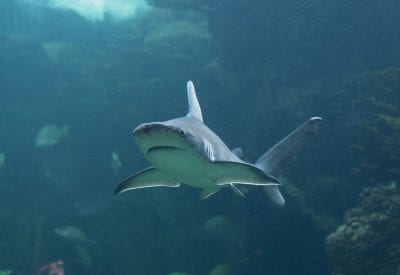Florida Waterways
CAPTIONS:
1. A lemon shark
2. Distribution map for lemon sharks
3. Lemon shark with remoras clinging to it
4. Upper teeth of a lemon shark
5. A lemon shark can be fierce looking
6. A close-up of a lemon shark in a Tampa aquarium
“Lemon Sharks”
By Kevin McCarthy
As August brings with it the annual scary episodes of “Shark Week,” we ought to take a look at a shark found in Florida waters, that does not usually attack humans, but which has greatly helped scientists who study the species: the lemon shark. The species (Negaprion brevirostris in Latin) can grow to more than ten feet in length, likes our shallow warm waters, and usually travels in packs, for protection from larger fish. Its yellow color, which makes it almost invisible when swimming over a sandy bottom, gave the fish its name. The International Shark Attack File, housed at the University of Florida, lists relatively few unprovoked lemon shark attacks, and the few listed were not fatal.
That particular species has a flat head, broad snout, and a second dorsal fin similar in size to the first one. Lemon sharks detect their prey by using what are called electroreceptors in their heads, receptors that can detect electrical pulses emitted by prey. Such receptors can easily function even in the dark of night.
The wide distribution of the sharks, as indicated by the blue lines on the map here, ranges from the Atlantic to the Pacific, especially in coral reefs, river mouths, and shallow-water mangroves. They prefer salt water, especially along the continental shelves, and live near rocky or sandy bottoms.
Commercial and recreational fishermen target the lemon shark for its meat, fins, and skin, but over-fishing has led to a decline in the numbers of such sharks. Scientists can trace them back over three hundred million years, but they are under increasing threats and are some of the hundred million sharks killed in the world each year, many of them in the despicable practice of shark finning: the process of slicing off the shark’s fin for sale to those who want shark-fin soup. Those doing the shark finning will then dump the still-living shark back into the ocean to face certain, painful death by other predators. Builders of golf courses have sometimes destroyed mangroves, where the sharks are often found.
Scientists at the University of Miami, especially Samuel Gruber, have done much research into lemon sharks, particularly in the western Bahamas, where Prof. Gruber has set up the Bimini Biological Field Station. That shark research station, in existence since 1990, has given scientists much knowledge about an important species of shark, Florida fishermen may encounter such sharks in subtropical shallow waters down to about 300 feet, and also in the coral reefs and mangroves around our shores, but seldom if ever in our freshwater streams.
Kevin McCarthy, the author of North Florida Waterways 2013 – (available at amazon.com), can be reached at ceyhankevin@gmail.com.

